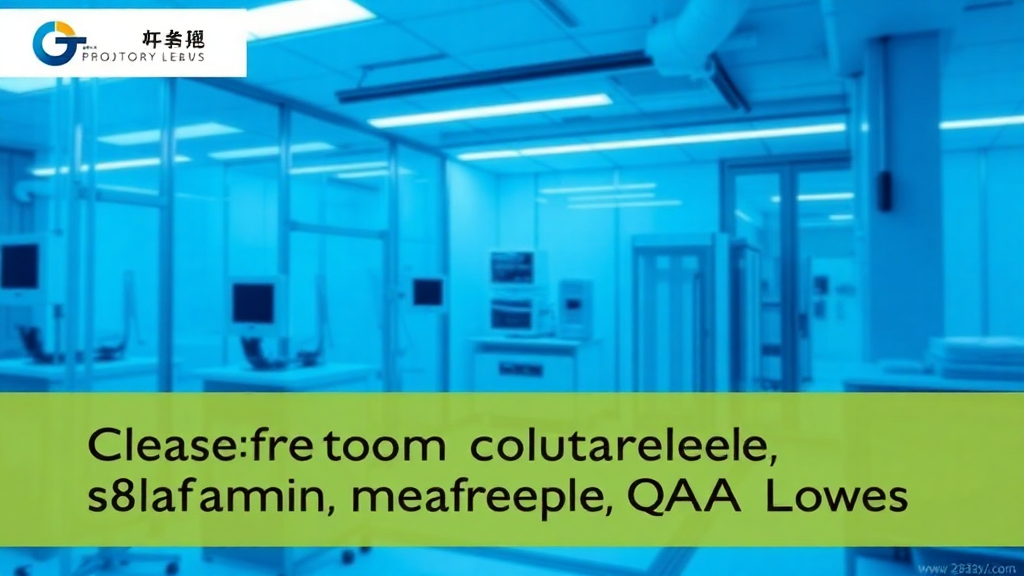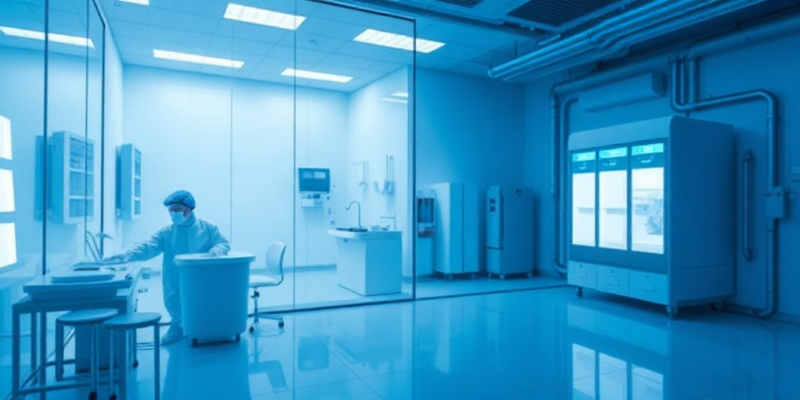«` HTML
Cleanroom Sleeves for Contamination-Free QA Labs

In the world of API manufacturing, maintaining a sterile environment is paramount. Cleanroom sleeves play a crucial role in contamination prevention, especially in microbiological quality assurance (QA) labs. This guide explores advanced solutions to address particulate shedding at cuff junctions, ensuring a sterile environment for critical testing procedures.
Why Particulate Shedding is a Major Concern

Particulate shedding at cuff junctions is a significant challenge in maintaining the integrity of cleanroom environments. In microbiological QA labs, even the smallest contamination can lead to compromised test results, potentially affecting product quality and safety.
The primary sources of particulate shedding in cleanroom garments are:
- Seams and stitching
- Material degradation over time
- Friction between surfaces
- Poor fit leading to excessive movement
These factors can introduce unwanted particles into the air, compromising the sterility of the lab environment. For API manufacturers, this can lead to:
- False positive results in sterility testing
- Increased risk of product contamination
- Regulatory compliance issues
- Cost overruns due to repeated testing
To address these concerns, advanced cleanroom sleeves have been developed with innovative features designed to minimize particulate shedding.
Key Features of Advanced Cleanroom Sleeves

Seamless Ultrasonic Welding
One of the most significant advancements in cleanroom sleeve technology is the use of seamless ultrasonic welding. This process eliminates traditional seams, which are a major source of particle generation. Ultrasonic welding creates a strong, smooth bond between fabric pieces without introducing additional materials or creating weak points.
High-Quality, Low-Shedding Materials
Advanced cleanroom sleeves utilize specially engineered fabrics designed to minimize particulate shedding. These materials often include:
- Polyester microfibers
- Polypropylene blends
- Advanced synthetic polymers
These materials are chosen for their durability, low linting properties, and resistance to degradation over time.
Knit vs. Seamless Cuff Comparisons
When comparing knit cuffs to seamless cuffs, the latter offers superior performance in particle containment:
| Knit Cuffs | Seamless Cuffs | |
|---|---|---|
| Pros | Comfortable, flexible | Minimal particulate shedding, smooth surface |
| Cons | Higher particulate shedding, potential for loose fibers | May be slightly less flexible |
For detailed comparison data, visit our sleeve test data page.
Enhanced Fit and Ergonomics
Advanced cleanroom sleeves are designed with improved fit and ergonomics to reduce unnecessary movement and friction. Features may include:
- Elasticized wrists for a snug fit
- Thumb loops to keep sleeves in place
- Graduated lengths for different arm sizes
How to Choose the Right Cleanroom Sleeves

Selecting the appropriate cleanroom sleeves for your microbiological QA lab involves considering several factors:
- Material Quality: Look for sleeves made from low-shedding, durable materials.
- Seam Construction: Opt for seamless designs or ultrasonic welded seams.
- Compliance with Standards: Ensure sleeves meet relevant industry standards (e.g., ISO 14644).
- Comfort and Fit: Choose sleeves that provide a snug but comfortable fit to minimize movement.
- Compatibility: Consider compatibility with other cleanroom garments and equipment.
- Particle Filtration Efficiency: Check the sleeve’s ability to filter particles of various sizes.
- Chemical Resistance: If applicable, ensure sleeves can withstand exposure to specific chemicals used in your lab.
Best Practices for Contamination Prevention
To maximize the effectiveness of your cleanroom sleeves and maintain a sterile environment:
- Proper Donning and Doffing: Train staff on correct procedures for putting on and removing sleeves.
- Regular Inspection: Check sleeves for signs of wear or damage before each use.
- Controlled Storage: Store sleeves in a clean, controlled environment to prevent contamination.
- Limited Movement: Encourage staff to minimize unnecessary arm movements while working.
- Layering: Use sleeves in conjunction with other cleanroom garments.
Questions fréquemment posées
FAQ 1
Answer 1 Placeholder
FAQ 2
Answer 2 Placeholder
FAQ 3
Answer 3 Placeholder
“`








